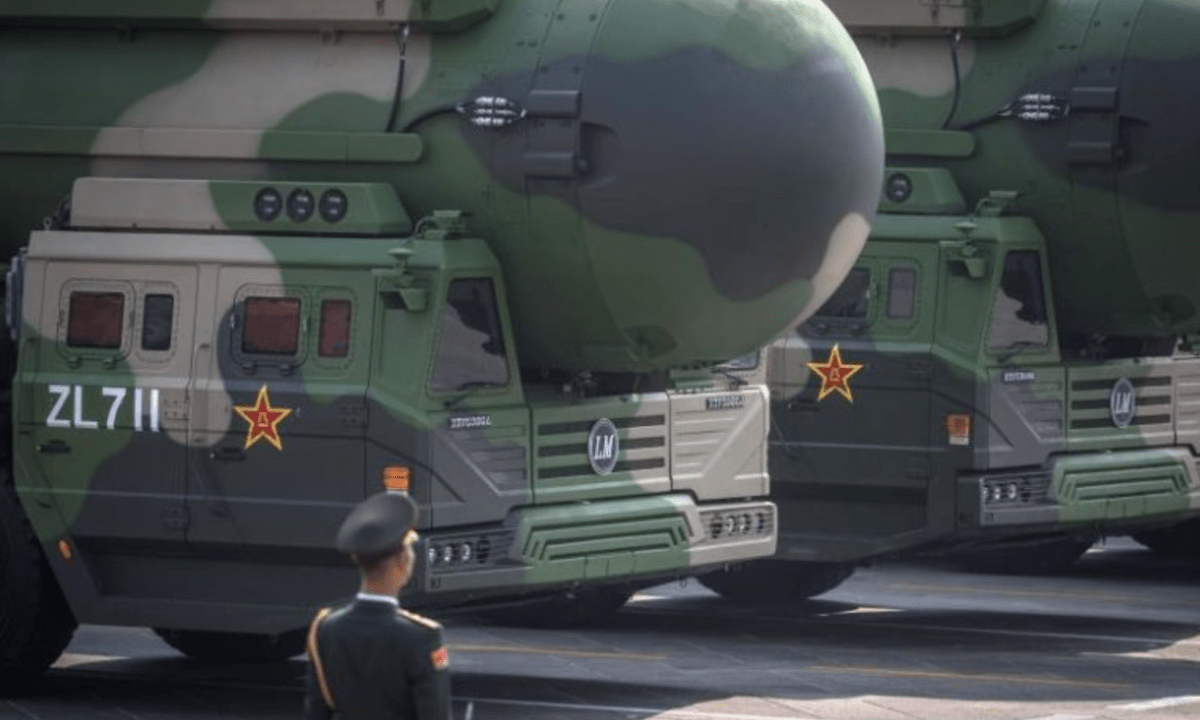[ad_1]
Details are still sketchy, but China claims it has successfully conducted a land-based, anti-ballistic missile technical test on Thursday.
State media reports say that the goal was to demonstrate capabilities to intercept an intermediate-range ballistic missile, or IRBM, during the mid-course portion of its flight.
According to state owned tabloid, The Global Times, experts said the test showed “China’s mastery of the technology†as the country’s ABM system gradually matures and becomes more reliable.
China’s Ministry of Defense said it achieved all of its goals, but offered no additional details, including whether an actual intercept of any kind had taken place, The War Zone‘s Joseph Trevithick reported.
Chinese authorities also insisted that the test was purely defensive in nature and was not meant as a signal to any country in particular.
It was the fifth land-based ABM technical test China has publicly announced and the fourth land-based, mid-course ABM technical test publicly known.  Â
Mid-course is the most vital phase in the interception of a ballistic missile, and a mid-course ABM means to intercept the missile while it is in its free flight phase outside of the atmosphere, Song Zhongping, a Chinese military expert and TV commentator, told the Global Times.
While the duration of the mid-course phase is relatively long, the great difficulty of an interception lies in the high trajectory, Song said, noting that the target of interception is usually intermediate-range or intercontinental ballistic missile.
According to Song, conducting the latest test shows that the system is becoming mature, and the success rate and reliability of interceptions are increasing significantly, which is very important for China to build a complete ABM system, Global Times reported.
The flight of a ballistic missile usually consists of three phases in time order: boost phase in which the rocket booster will power the missile into sky, mid-course phase in which the booster stops as the missile traverses outside of the atmosphere, and re-entry or terminal phase in which the missile re-enters the atmosphere and dives on its target.
It’s technically easy to intercept a ballistic missile in the boost phase, because the missile is still close to the ground and accelerating, but it is difficult to get close to the launch site which is usually deep in hostile territory; in terminal phase, the interception is challenging because the speed of the diving missile is very high, observers said.
Unconfirmed video of a possible rocket or missile launch emanating from northern China has emerged on social media, War Zone reported.
The clips are similar to imagery that appeared online after another anti-ballistic missile test in 2018, but are also what one would expect to see from any large rocket or missile launch.
If this footage is from this test, it could indicate a launch from the Taiyuan Satellite Launch Center in Shanxi Province.
 China is “developing kinetic-kill vehicle technology to field a midcourse interceptor, which will form the upper layer of a multi-tiered missile defense,†according to the most recent annual public report from the Pentagon, which it released last September.
A “kinetic-kill†interceptor, also known as a hit-to-kill type, is designed to destroy its target by physically slamming into it, rather than via a traditional warhead.
According to Wikipedia, the United States, Russia, Taiwan, France, Israel, Italy and the United Kingdom have all developed various missile defense systems.
[ad_2]
Source link













